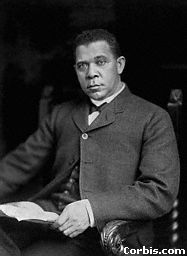The Harlem Renaissance was a coming of age, of sorts, for black culture in America. It is important, however, that we first acknowledge a movement that led to this Renaissance. The Niagra Movement was a distinct predecessor to the Harlem Renaissance. Without the Niagra movement, the Harlem Renaissance certainly would not have had the impact it did, and may have not happened at all.
The Niagra Movement commenced in the late 1890's as a future leader of the NAACP, W.E.B. DuBois, decided to do something about the racism that blacks were facing in America. DuBois, joined by Booker T. Washington and others, began traveling around the Eastern U.S. and speaking out against the conditions under which blacks were being forced to live. This agitation caused the rift between blacks and whites to widen, but remained determined. He left his job to go to Tuskegee, Alabama, in order to pursue his goal of furthering African-Americans. After many interviews and meetings, The Council of Twelve was formed. This council was given the responsibility of overseeing the movement that was to mold blacks into a united and strong society. The council, needless to say, was initially wildly successful. The idea, however, was sound and laid the groundwork for the increasing unity that was to come.
The time period where the Niagra Movement can really be seen as a precursor to the Harlem Renaissance was in 1905 and 1906. In 1905, fifty-nine black men, from seventeen states, called a meeting that was to take place in Buffalo, NY. This meeting was called to discuss the necessity to organize and mobilize black intellectuals in order for their race to move forward. This meeting led to the formalization of the "Niagra Movement" in 1906. The first meeting was held later that year, under heavy criticism, at the site of John Brown's raid at Harper's Ferry. The movement itself lost steam rather quickly but did result in the creation of the NAACP and was pivotal in the birth of the Harlem Renaissance. |


